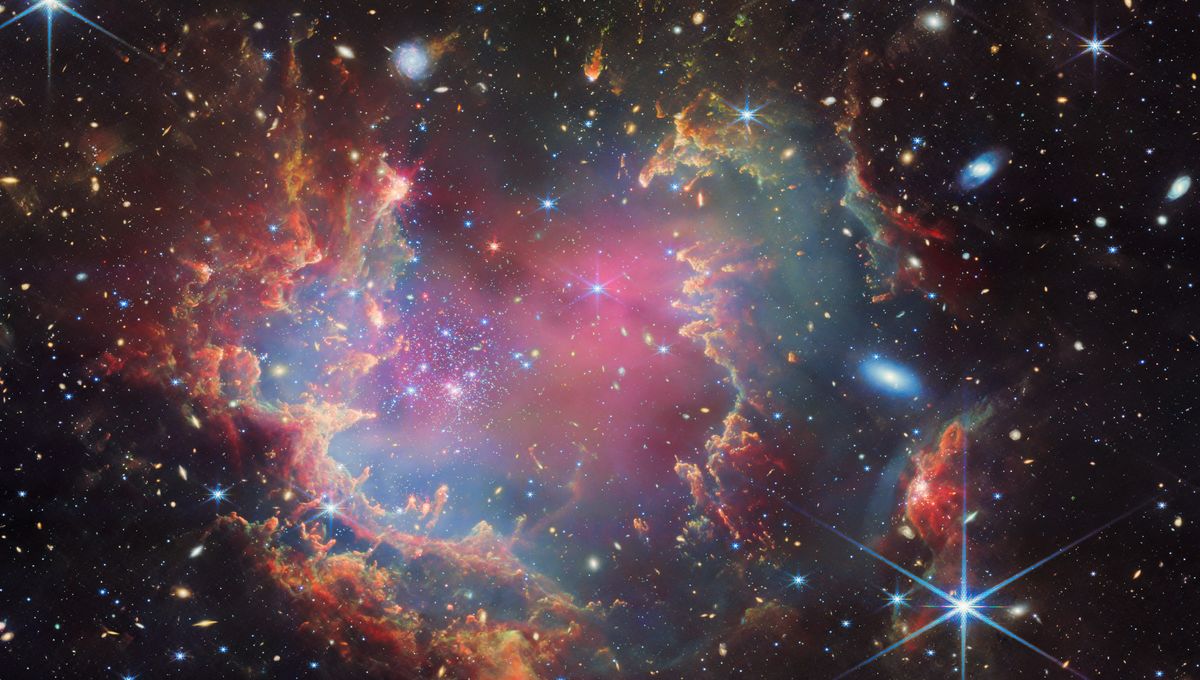
Some stellar objects simply don’t have what it takes to become stars. Namely, they are not massive enough to start nuclear fusion at their cores. These are brown dwarfs. There are a few thousand known brown dwarfs in the Milky Way and we have never seen any beyond our galaxy. They are cool objects, which makes it very difficult to see them past a certain distance.
Enter JWST and its incredible sensitivity and resolution. The telescope was pointed at young stellar cluster NGC 602; located in the Small Magellanic Cloud, it is a neighboring galaxy visible from the Southern Hemisphere and is 200,000 light-years from Earth. It was there that the team found objects that were consistent with being brown dwarfs.
“Until now, we’ve known of about 3000 brown dwarfs, but they all live inside our own galaxy,” team member Elena Manjavacas of AURA/STScI for the European Space Agency said in a statement.
Brown dwarfs are the heavier cousins of gas giant planets, possessing a mass between 13 to 75 times that of Jupiter. The classification is not exactly strict at both ends. The line between a gas giant planet and a brown dwarf is vague. For example, JWST spotted objects that are likely brown dwarfs but are roughly the size of Jupiter. The fact that we can spot such small objects in a whole other galaxy is incredible.
“Only thanks to the incredible sensitivity and resolution in the right wavelength range we are able to detect these objects at such great distances,” explained lead author Peter Zeidler of AURA/STScI for the European Space Agency. “This has never been possible before and also will remain impossible with telescopes on the ground for the foreseeable future.”
The work showed the synergy between Hubble and JWST. Hubble has shown that this cluster had many young low-mass stars, while JWST actually delivered observations where individual brown dwarf candidates could be seen.
A way to separate brown dwarfs from planets is the formation. If the object forms like a star – from a collapsing clump – it is a brown dwarf. Growing from smaller bits and accumulating gas? The object is a planet. These candidates have formed like stars, suggesting they are brown dwarfs, but their similarities to exoplanets might lead to new insights.
“Brown dwarfs seem to form in the same way as stars, they just don’t capture enough mass to become a fully fledged star. Our results fit well with this theory,” remarked Zeidler.
“These are the first giant exoplanet analogues outside the Milky Way,” explained Manjavacas. “We need to be ready for ground-breaking discoveries in these new objects!”
The results have been published in The Astrophysical Journal.
Source Link: First Brown Dwarf Candidates Discovered Beyond Our Galaxy, 200,000 Light-Years From Earth